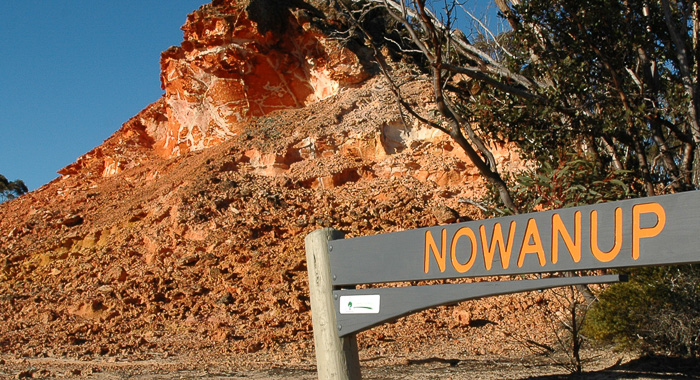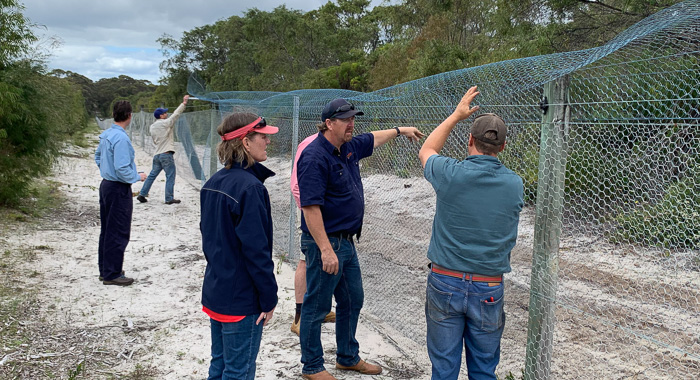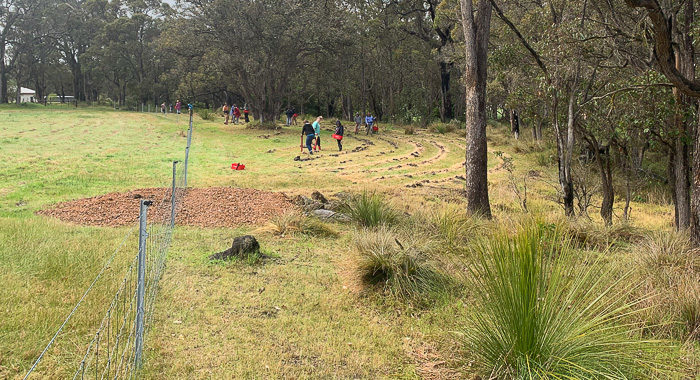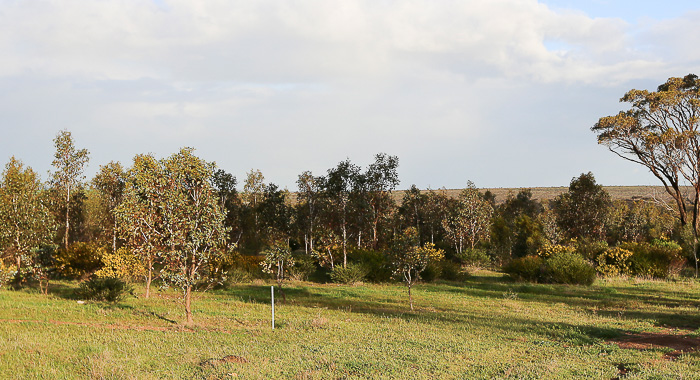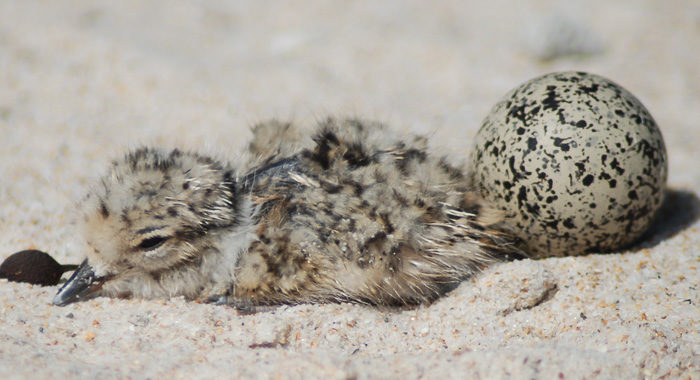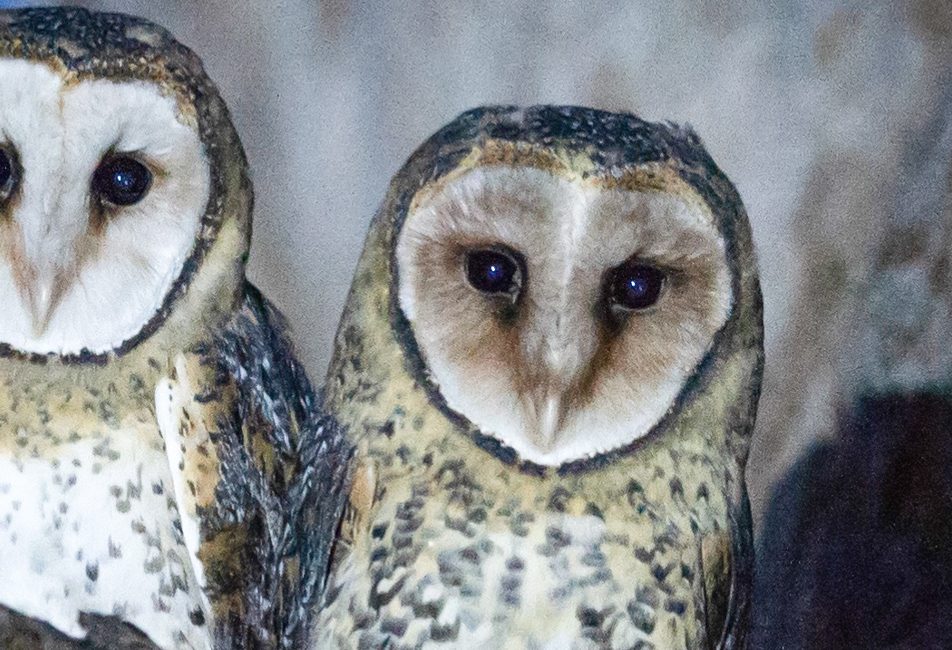We take the long view, that it’s not enough to ‘save’ a few rare species while their habitats and the abundance of other species crashes around them. Our core commitment is to salvage and strengthen the ‘self-managing’ ability of ecosystems across Gondwana Link, by restoring the key ecological functions that underpin ecological health.
This forward looking approach recognises the accepted definition of restoration, encompassing a broad spectrum of actions and outcomes, and works within the understanding that ecosystems and human societies are dynamic and everchanging. Restoration is not about recreating a lost past, but building a vibrant future.
In south-western Australia most ecosystems were cleared or damaged before we, as a society, really understand and appreciated the region’s globally significant ecological importance. We now know that the remaining habitats are as biologically rich as tropical rainforests and other iconic areas on Earth, but are still learning what has maintained such richness over time. See this short animation for an explanation of this.
To achieve more ecological health and resilience we need are working together to restore a range of key sites and key ecological functions.
Restoring connectivity
Animals need to be able to move around as conditions change. So do, over long periods of time, many plants and other organisms. We’ve removed that ability by clearing much of the landscape. Along Gondwana Link this connectivity can be restored by careful restoration of key areas strategically located along the ancient evolutionary pathway that spans high and low rainfall areas.
This work is well underway. All up, we estimate over 14,500ha has been planted and restored since the inception of the Gondwana Link, most of it in these strategically critical locations. The largest gains have been made by planting strategically located farmland with the species that originally grew on the land, and providing nature with the opportunity to create natural, functioning ecosystems over time. Ongoing monitoring is needed to learn, adapt management and improve future restoration as well as share knowledge with others. And we need to also consider the other key ecological functions.
‘We’ve put the right species in the right places at the right stocking and in the right composition. So the result is the beginning of a returning ecosystem.’ Justin Jonson, Restoration Ecologist
Restoring fire regimes
Fire is out of balance across the Gondwana Link landscape. While fire has always been a factor in our climate, there are numerous factors involved in the current lack of balance – the loss of traditional burning practices, over zealous use of prescribed fire, various land uses leading to more fire escapes during the dry summer. All this and now a drying climate.
Planning work by various groups in various areas across the link have clearly identified fire management as an urgent need. While we can’t return to a pre-European, pre climate change world, we can learn from the past to restore the key elements that work in a different future. One focus is on expanding the use of ‘slow fire’ – as practiced by Noongar and Ngadju people for tens of thousands of years, and still as relevant to protecting our living areas and productive assets as it was to protecting their living areas and productive assets. We also support a drastically increased ‘rapid response’ capacity in local communities. Too often we have seen vast areas burn because fires the initial fires went unchecked for too long. This is not a criticism of brigades and emergency service personnel, but a recognition of the need for a greatly increased aerial and ground suppression capacity, matched with the latest satellite technologies that enable fire to be identified as soon as they start. Small wildfires caught early are relatively easy to control, large fires are both uncontrollable and devastating.
We are concerned that impacts from widespread use of ‘hot’ prescribed fire are rapidly worsening in the drier climate, and have watched with dismay as tree canopies, peat swamps and other precious environmental features have been damaged, often irreparably, by the fire management meant to protect them.
To help support informed discussion on ecologically based fire management we have supported a number of projects aimed at understanding the changes that have crept up on us all over recent decades, understanding what now works well and what doesn’t, and where to increase the resources available for fire management.
Restoring food webs
Wildlife across south-western Australia suffer from an unbalanced food web. Many birds are still hanging in there, but the smaller mammals are much less common, and some have disappeared into extinction, along with the vital roles of turning over leaf litter and soil reducing fire risk and aiding germination), distributing seeds, and being food for larger animals. While ecologists around the world recognize the importance for food webs of maintaining apex predators, our dingos seem incompatible with sheep farming and have been eradicated from settled areas, and we have fewer large many hunting birds, such as the eagles. The introduction of foxes and cats have further balanced the system – they hunt differently than native wildlife, and are preying on much diminished populations.
Considerable effort is going into eradicating cats, foxes and the rabbits that keep them fed when native wildlife is scarce.
Restoring water systems
After 250 million years clothed in dense, deep rooted woody vegetation, the south-western landscape has not responded well to widespread clearing and planting of annual crops and pastures. Wetlands have been drowned by too much water, rivers have gone salty, and even large areas of once woodland is being claimed by the spreading salt. Framing economics makes it very hard for farmers to be sustainable on their own properties, but we can work together to have sustainable landscapes, that include farms and wildlife. Every strategic planting across Gondwana Link improves landscape habitat and connectivity, as well as helping to stabilise the water systems and reduce erosion into them. In some catchments, from work that started long before we arrived, the return to health has been astoundingly rapid. A great example is some of the Oyster Harbour Catchment Groups work in the video below.
Respecting culture and restoring communities
A first step for us is to always recognise the original people of the land, to understand that many areas contain important traces of their long occupation and to appreciate the hardships they are still enduring. We strongly recommend asking and working with the wisdom of their Elders. The First Nations people have been managing this land for thousands of years, protecting and helping to shape the richness we admire today. Many of the traditional owners have a strong wish to be involved with the management and restoration of the land, to utilise their deep knowledge on how to care for their country. A respectful approach to land restoration involves helping restore First Nations peoples to their original management roles on country.
Our work also provides benefits to the broader community. Many Gondwana Link projects have enriched the community life of the areas they are located amongst. We need to find a balance where ecosystems and society mutually prosper.




